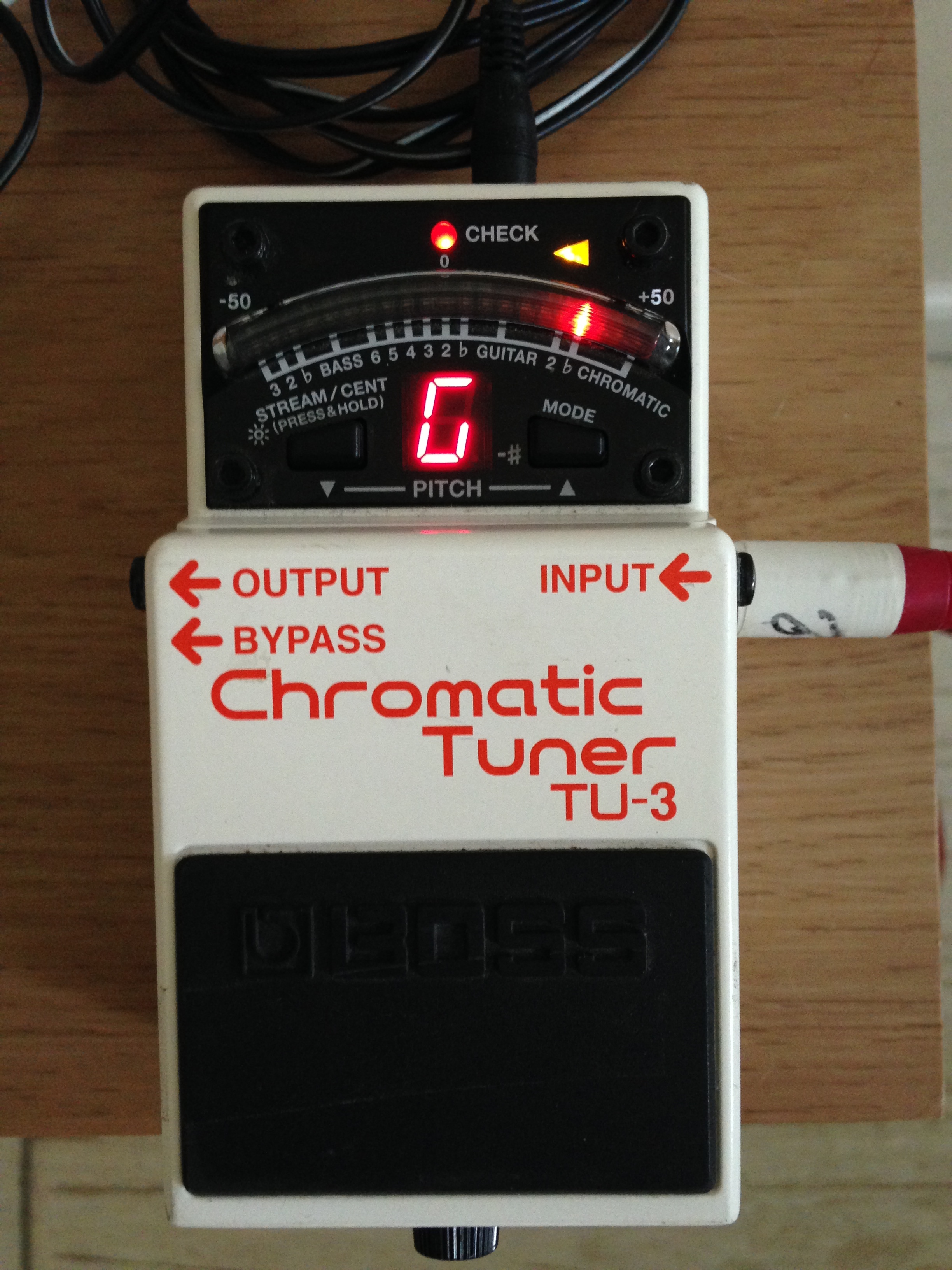

Additionally, there are two ways to view whether or not you’re in tune – using the standard cent mode (flashing the light some degree to the left to indicate that you’re flat, and to the right to indicate that you’re sharp.) Alternatively, the lights can spin left / right, with them slowing down as you get closer to becoming in-tune. The pedal has a 21-segment LED meter making it easy to see how sharp or flat you are. Even changes in temperature or humidity can slightly affect the guitar’s tuning, so you’re never going to maintain a 100% perfect tune regardless of what tuner you end up going with. Some purists would argue that even 1 cent is not as accurate as it could be, but really this difference is so insignificant that it’s hardly worth talking about. The entire point of a tuner is well, to help you tune your instrument! The TU-3 is incredibly accurate up to +/- 1 cent. This is used to tune down between 1-6 semitones, which is especially convenient for rock or metal guitarists that often deviate away from standard tuning. If you look at the TU-3 stompbox head-on, you’ll notice numbers ranging from 2 to 6 next to the flat symbol. Musicians are able to quickly cycle through modes to get to what they want.Īdditionally, the TU-3 also has a chromatic mode, allowing you to tune to any note you like. However, it also supports 7-string guitars, and 5 or 6-string basses accurately. Considering it’s a tuner (which let’s be honest, isn’t all that exciting) there are still a lot of neat features that you’re sure to appreciate!Īs mentioned earlier, the TU-3 has built-in support for both guitar and for bass. Now that we’ve got that out of the way, let’s cover the unique features of the Boss TU-3 and why you might want to use it. So, it really is worth investing in a more expensive pedal if you’re going to play guitar for the long-term – and a tuner is usually one that we recommend first. Usually they’re much slower to use, aren’t as accurate, and are difficult to see in the sun (or under bright stage lights.) Just about every stage performer uses a pedal and even those that only play in their home tend to prefer pedals due to the convenience and accuracy. Or even worse, they try to tune using a smartphone application.Ĭlip-on tuners are fine, but they offer a number of drawbacks. When we work with students, most people start out with a clip-on tuner that clips onto the headstock of your guitar. And as mentioned, it’s perfectly suitable for bass guitar as well (more on that later.) Why Use A Tuner Pedal Instead Of A Clip-On? This pedal doesn’t discriminate by genre or guitar.

Chris Cornell (Soundgarden / Audioslave).

Some notable musicians that use the BOSS TU-3 include:
#Boss tu3 chromatic tuner professional
It is used by professional guitarists and bassists across just about every genre. The TU-3 has been considered an industry standard for a while now, just like the TU-2 (Boss’ earlier model of this pedal) was before that. So without any further ado, here is our review for the BOSS TU-3 tuner.įirst things first, I would just like to give you a bit of perspective. In this article, we’re going to go over the BOSS TU-3 Chromatic Tuner Stompbox in detail, to help you determine whether or not this pedal is right for you. However, with a number of different tuners available on the market, it can be difficult to decide which one is actually best for you. Tuner pedals are essential, and one of the first pedals that most guitarists should buy – especially if they ever intend to perform on a stage. The Boss TU-3 is one of the most popular tuning pedals in existence, and for good reason.


 0 kommentar(er)
0 kommentar(er)
